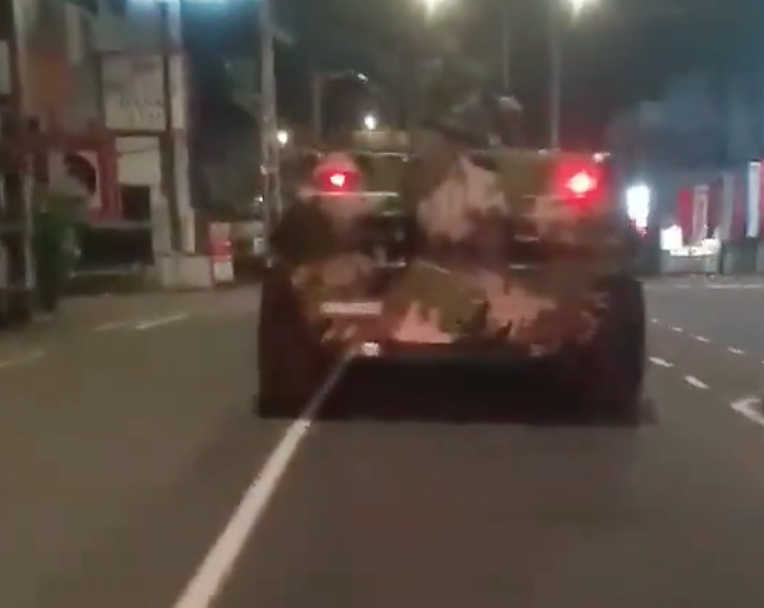
Military convoys have been reportedly deployed in Sri Lanka's capital Colombo as island-wide anti-government protests are held today, as a state of emergency and curfew have gripped the island.
The sighting of armoured vehicles and tanks in the capital, a common sight in the military occupied North-East, comes as Sri Lanka’s president Gotabaya Rajapaksa declared a state of emergency in the wake of the anti-government protests.
Reports have also emerged that the 53 Brigade of the Sri Lankan military which is led by General Kamal Gunaratne and stationed in the Tamil homeland, has been ordered to move towards the capital but has not yet been confirmed.
Meanwhile, Sri Lanka’s president Gotabaya Rajapaksa declared a state of emergency, giving unfettered powers to security forces. This follows the Mirihana protests where hundreds of citizens protested and were detained near Rajapaksa's home.
The state of emergency comes in light of a 36-hour curfew and extraordinary gazette that bars the public from the vast majority of public spaces "except under the authority of a written permit granted Secretary, Ministry of Defence or Secretary, Ministry of Public Security or Inspector-General of Police or any officer authorized by them”.
— D???? K??D???MY (@duhcoolies) April 2, 2022
More than 600 arrested, social media blocked
Sri Lankan police have arrested 664 individuals in the Western province for having violated an island-wide curfew, which is effective until 6 am on Monday.
In addition to limitations on movement, there have also been reports of restrictions on a number of major social media platforms including Twitter, WhatsApp, and Facebook – key platforms of communication for many on the island.
Users across the island have begun using VPN services in an attempt to bypass apparent restrictions, as services began to be disrupted.
Responding to Sri Lanka’s state of emergency, the European Union and US Ambassador to Sri Lanka has raised concerns and stressed the need to respect democratic rights.
Concerned by the state of emergency, EU strongly urges Sri Lankan authorities to safeguard democratic rights of all citizens, including right to free assembly and dissent, which has to be peaceful. Challenging times for Sri Lankan people- EU continues to follow situation closely
— EU in Sri Lanka (@EU_in_Sri_Lanka) April 2, 2022
Sri Lankans have a right to protest peacefully - essential for democratic expression. I am watching the situation closely, and hope the coming days bring restraint from all sides, as well as much needed economic stability and relief for those suffering.
— Ambassador Julie Chung (@USAmbSL) April 2, 2022
As tanks reportedly rolled into Colombo in advance of planned protests, for Tamils in the capital from the North-East the militarisation was a familiar sight. The Tamil homeland has been subject to strategic militarization for decades. The Sri Lankan military's presence in the Mullaitivu District alone is equivalent to 60,000 personnel according to one study, amounting to one soldier for every two civilians.
The protests come in response to Sri Lanka’s worst economic crisis in decades, which has led to severe shortages and resource depletion with items like milk sachets, food, fuel and medicine becoming increasingly expensive or scarce. The situation has become direr with inflation, as the cost of living has risen drastically for all those living across the island.
Despite the escalating militarization of the south, the state of emergency and the nationwide curfew, locals and activists continue to express dissent against the Rajapaksa regime's handling of the economic crisis by continuing to plan protests across various cities for the coming days.
